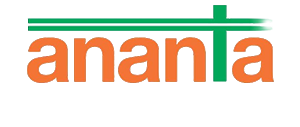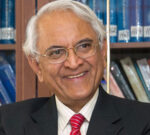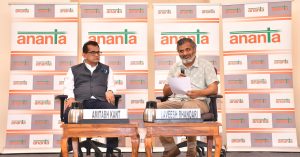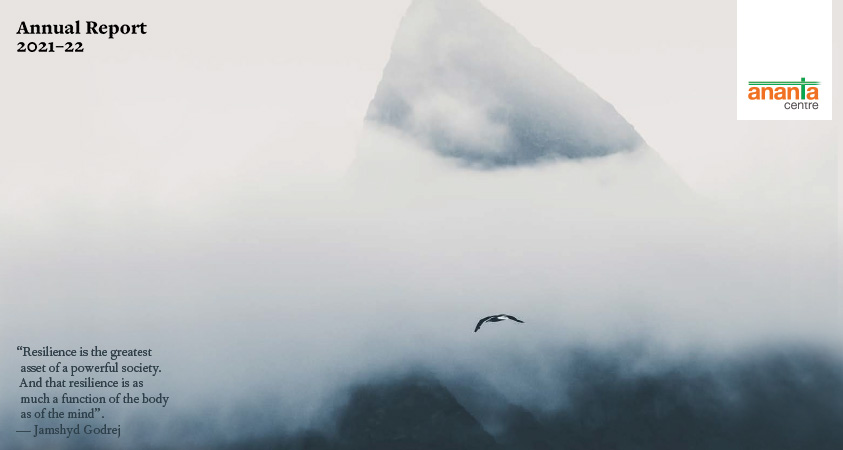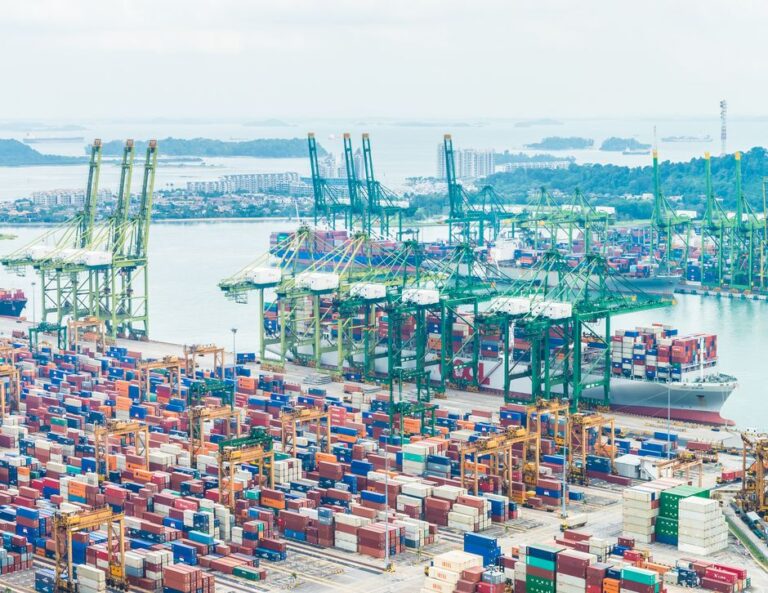Overview
• Which is the bigger threat: Russia or China?
• Navalny: in Europe we trust
• Nordstream 2: in or out?
• Eastern Ukraine: on a snakes-and-ladders board
• Sputnik V finally takes off (almost)
Which is the bigger threat: Russia or China?
Pronouncements on the foreign policy and national security priorities of the Biden Administration provided some clues on unfolding US policies towards Russia and China, in Europe, on Ukraine and with respect to Syria and Afghanistan.
The Biden Administration archived the Trump Administration’s National Security Strategy (2017), and issued an “Interim National Security Guidance” (INSG), while a more detailed NSS is under preparation. Secretary Blinken outlined the major foreign policy directions of the Administration in a couple of speeches. Both articulations eschewed harsh Trumpian rhetoric, but revealed a continuity of policy in many areas.
There was a change of emphasis in the formulations on Russia and China. In one of the few public endorsements of President Trump’s views, Secretary of State Blinken told CNN that Trump was right to take a tougher approach to China, though the way he went about it was wrong. In his foreign policy address, Blinken said several countries, “including Russia, Iran and North Korea” present the US with “serious challenges”, but relations with China are “the biggest geopolitical test of the 21st century” – they will be competitive, collaborative or adversarial, as required by circumstances. He elaborated that China is “the only country [emphasis added] with the economic, diplomatic, military, and technological power to seriously challenge the stable and open international system”.
The INSG had stronger language for Russia, talking about growing US rivalry “with China, Russia, and other authoritarian states”. It asserts that Russia is “determined to enhance its global influence and play a disruptive role on the world stage” and that both China and Russia “have invested heavily in efforts to check U.S. strengths”. It promises an appropriate force structure, in weapons and technologies, to counter “an increasingly assertive China and destabilizing Russia”.
These formulations differ in emphasis from those issued by the Trump Administration. The Trump NSS had termed both China and Russia as “revisionist powers”, but identified Russia, with its military capabilities, as posing the “most significant existential threat to the United States”. It declared that the combination of Russian ambition and growing military capabilities “creates an unstable frontier in Eurasia, where the risk of conflict due to Russian miscalculation is growing”.
It remains to be seen whether this enhanced emphasis on challenges from China, and relative de-emphasis of Russia’s destructive impact, will be reflected in US policies and actions. Ukraine and Syria may create new frictions, while Russian cooperation may be useful in Afghanistan and on Iran. These issues (and European perspectives) will shape US threat perceptions about Russia.
Navalny: in Europe we trust
In his testimony to the House of Representatives’ Foreign Affairs Committee, Secretary Blinken adduced, as one illustration of the Administration’s pledged commitment to democracy and human rights, the US sanctions on Russia for the alleged poisoning and detention of opposition activist Alexei Navalny. The timing, announcement and content of the sanctions were interesting. Navalny was allegedly poisoned in August 2020 and imprisoned in January 2021. The US sanctions were announced in early March, after the EU sanctions. The announcement said the US shares the EU’s concerns about Russia’s “deepening authoritarianism” and welcomes its decision to impose sanctions. The call for immediate and unconditional release of Navalny was reiterated. The sanctions themselves included travel bans and asset freezes in respect of the same seven top Russian officials, who were covered by the EU sanctions: the head of Russian intelligence agency FSB, two senior officials in President Putin’s secretariat, two Deputy Defence Ministers, the head of the Penitentiary Service and the Russian Prosecutor General. Considering that these senior Russian officials are already restrained by Russian government orders from travelling to the West and had already taken the elementary precaution of not retaining assets there, these sanctions are largely symbolic. Navalny’s supporters in Russia and Europe had demanded harsher sanctions, particularly against oligarchs “close” to President Putin, who actually have business interests in the West. The EU and the US may not have been ready at this stage for such a drastic escalation, which would have impacted their economies as well – as happened in 2018, when hastily-imposed sanctions on the Russian aluminium major Rusal (whose promoter is also widely described as “Putin’s pal”) shook the global commodities market and impacted on investors from the US to Europe and Australia. In this case, the Russian rouble and government bonds, which had sunk in value on rumours of harsh sanctions, bounced back immediately.
Additionally, 14 entities were added to the list of those with whom trade, investment and financing activities are prohibited – they included intelligence officials and research institutes accused of supporting Russia’s WMD and chemical weapons programmes. Again, by the very nature of their activities, these entities have almost no official or commercial dealings with the West.
On its part, Russia also went through the motions of protest. The MFA called the sanctions “a hostile anti-Russian attack” and promised a “reciprocal but not necessarily symmetrical” response. President Putin’s spokesman also promised reciprocation, without elaborating.
By following the EU and UK sanctions and by echoing their pronouncements, the Biden Administration seemed to be underlining the message of working closely with allies and partners in pursuing such interests.
Nordstream 2: in or out?
The eventual fate of the controversial Russia-Germany undersea gas pipeline, Nordstream 2, will be one of the tests of the US assurance of sensitivity, rather than aggression, in dealings with its European allies. Sanctions (and threats of them) by the Trump Administration had already scared off European contractors from the project. In a parting gift (on January 19, Trump’s last day in office), the outgoing Administration imposed sanctions on the one remaining implementing entity – the Russian pipelaying vessel, Fortuna. Signalling that this would not deter it, Fortuna continued pipe-laying activities in Denmark’s territorial waters.
There is still over 150 km of the pipeline that remains to be built. Meanwhile, pressures to suspend or scrap the project are growing all round. In another indication of continuity with the Trump Administration’s thinking, Secretary Blinken confirmed that the US Administration’s “focus and efforts remain the same …… preventing the completion of Nord Stream 2 pipeline”, describing it as a bad deal that divides Europe. Republicans in the US Congress are asking the State Department to invoke CAATSA to stop the project. Since the Biden Administration is committed not to impose sanctions on its European allies, it has to find other instruments of dissuasion.
These instruments could be found within Europe itself. The opposition of Central and North European countries has become shriller. In addition, senior French officials have started questioning the rationale for Nordstream 2, on grounds ranging from Navalny to clean energy alternatives and energy-independence from Russia. France had earlier been a staunch supporter of the project. In Germany, which undertook evacuation of the ailing Navalny from Russia and discovered his poisoning agent, opposing voices are strengthening. Germany’s future position on this project will also be influenced by the outcome of the forthcoming federal elections, especially as one strong supporter of the project, Chancellor Merkel, will be stepping down. Finally, as the US and Europe seek to reconcile their interests on a range of knotty issues, from Ukraine and Russia to NATO, energy, Syria and others, putting Nordstream 2 on the backburner may be one of the easier compromises to make.
Eastern Ukraine: on a snakes-and-ladders board
The situation in eastern Ukraine will present the first test of US-Europe collaboration. This Review has followed the tortuous course of negotiations in the Normandy Format (Russia, Ukraine, France, Germany), buffeted by differing perspectives in the US and Europe, as well as Ukrainian nationalist opinion. The Franco-German keenness to resolve the impasse made progress during several periods, when US attention was diverted – the latest in the period from end-2019 (when France hosted a summit) to July 2020. The progress dissipated in recent months, as the EU was engrossed in internal issues and Ukraine decided to wait for the Presidential transition in Washington. The Navalny issue further dampened the Franco-German initiative. Russia has angrily accused Ukraine of going back on its commitments given in December 2019 and July 2020 (see Reviews 1/20 & 7/20) and berated the French and the Germans for not enforcing the deals they brokered. The July ceasefire has broken down and the fighting has flared up again, with both sides having mobilized heavy weaponry.
The last thrust for a settlement was set in motion in 2019, when the newly elected Ukrainian President indicated his willingness to make compromises, in the interests of peace, which would facilitate Ukraine’s economic reconstruction and growth. However, he encountered fierce criticism, both within his country and from parts of Europe, for compromising Ukrainian interests by agreeing to the federalization of the country. The fact is that this is what the Minsk Accords of 2014-15, which were endorsed by the UN Security Council, mandate. As covered in detail in the Review of September 2020, these accords were a product of the balance of forces on the ground at that time. They provided for autonomy for the two eastern provinces to be incorporated into the Ukrainian constitution and thereafter elections to be held there. Only thereafter would Ukrainian troops be able to move into these areas to patrol the border with Russia. The Minsk Accords do not provide for return of Crimea to Ukraine. US and EU statements routinely say they do not recognize the “annexation” of Crimea by Russia. However, most of the Western sanctions are actually linked to fulfilment of the Minsk Accords.
The Ukrainian President has now reset his compass. He has said he wants a forum that can negotiate a return of Crimea to Ukraine. He has called for President Biden to join the Normandy format. If this is not possible, he said, another format should be created with the US and Russia, in parallel with the Normandy format. He has added that he is “ready to do anything” to move forward on these goals.
It is clear he has figured out what he needs to do for this. The inspiration may have come from a telephone conversation between Secretary of State Blinken and the Ukrainian Foreign Minister on February 1, in which the former “emphasized … the priority the US places on Ukraine’s sovereignty, territorial integrity, and Euro-Atlantic aspirations” and pledged to continue “robust U.S. economic and military assistance”. The Secretary was also quoted by the State Department as having emphasized the importance of fighting corruption and implementing the rule of law. The two Ministers discussed “a diplomatic resolution to Russia’s aggression in eastern Ukraine and Crimea”.
Shortly after that conversation, President Zelenskyy issued orders for closure of three Ukrainian TV channels, accusing them of being agents of Russian influence, undermining his government. The outlets are owned by a Ukrainian parliamentarian, with alleged ties to the “pro-Russian” opposition leader Viktor Medvedchuk. A Presidential advisor clarified that this action was not about freedom of speech, but about countering foreign propaganda that was killing Ukrainian values. The decision drew immediate applause from the American Embassy in Kiev, which tweeted the very next day that it supports the effort “to counter Russia’s malign influence” and believes it was in legitimate defence of Ukraine’s sovereignty and territorial integrity.
Zelenskyy’s advisers have explained this and other actions in the context of his efforts to dismantle Ukraine’s corrupt oligarchic system. In the weeks following the TV channel bans, Ukraine also imposed a range of personal sanctions against Medvedchuk and his wife. Another oligarch cut down to size recently was Dmitry Firtash, who had a monopoly of the domestic gas market and was also, coincidentally, reputed to be a “Putin-friendly” oligarch. Zelenskyy is now moving to bring to justice the oligarch Ihor Kolomoyskyy, whose multiple business interests include the media outlet on which Zelenskyy built his popularity as an actor-comedian in a serial. Kolomoyskyy, (like most oligarchs of that geography) has had a chequered career. He was once an associate of the pro-West President Poroshenko, at which time, Russia had issued an Interpol notice for his arrest for mobilizing support against Donbas militants. Since falling out with Poroshenko, he has been embroiled in a number of court cases, in Ukraine and elsewhere in Europe, on charges of embezzlement of funds from a major Ukrainian bank, of which he was a promoter. In November 2019, he had told the New York Times that the US was fighting Russia “to the last Ukrainian” and that Russia was more likely to contribute to Ukrainian economic reconstruction than the US. The US State Department announced sanctions against Kolomoyskyy and his family on March 5.
In another move that was aligned with US policy, President Zelenskyy imposed sanctions in early February against Chinese acquirers of shares in the Ukrainian aero-engine manufacturer, Motor Sich, and announced the decision to renationalize the company. In January, the US had also imposed sanctions on the Chinese company, accusing it of “predatory investments and technology acquisitions”.
In early-March, the Pentagon announced that it was providing a US$ 125 million package of military assistance to Ukraine for “defensive” weapons to help Ukraine’s defence against Russian aggression.
Over the years, the progress of negotiations on the Ukrainian impasse has resembled the course of a snakes-and-ladders board game (which was popular with Indian kids in the pre-internet era of the last century). In one version of that game, a snake awaits the token reaching square 85 (on the way to the goal of 100), to send it back to near square 1. The Ukraine negotiations may be headed the same way.
Sputnik V finally takes off (almost)
When Russia’s Ministry of Health first registered Sputnik V, to make it the world’s first registered Covid vaccine, it was met with scepticism, and even anger, around the world. The vaccine had not undergone even a minimum level of phase 3 testing and it was felt that Russia was playing with human lives for the geopolitical brownie point of pipping the West to the post. Even its name reeked of geopolitics, recalling the Soviet Union’s achievement of being the first country in the world to launch a satellite into space – the Sputnik 1. The fact that Putin’s daughter and the Russian Defence Minister were among the first to be vaccinated, did not cut much ice, nor did the publication in that gold standard of medical publishing – the research journal The Lancet, of preliminary, limited phase 1/2 results, showing strong immune response.
In the months since, Sputnik V was absent from virtually every discussion of top vaccine candidates. This attitude did not change, even after AstraZeneca started trials with the developers of Sputnik to study the efficacy of the first dose of one, followed by a second dose of the other. The near-universal shunning of Sputnik was certainly a part of the international political cold-shouldering of Russia, but it also seemed to be validated by the fact that, even as Coronavirus infection rates were rising in Russia, there was a high level of reluctance in its population to take the vaccination.
This indifference dissipated, when The Lancet published authenticated, peer-reviewed results in February, showing that Sputnik V was among the top three among effective vaccines. Late-stage trial results deemed the vaccine to be safe and offering about 92% protection against Covid-19. Even more, the editor-in-chief of the journal publicly extolled the Russian vaccine as particularly robust, because it used different adenoviral vectors in the two doses, thereby strengthening immunity. He confirmed that in the process of peer-review, Russian scientists had been “very professional and cooperative”.
This certificate of quality and good behaviour came at a time, when Europe was caught in a spiralling wave of new infections, with Brussels being hauled over the coals for mismanaging the rollout of vaccines, and the Commission, in turn, blaming manufacturers for not honouring their supply commitments. According to a Bloomberg report in February, the EU had administered only 9.35 vaccine doses per 100 people, compared with nearly 28 by the U.S. and more than 35 by the UK.
Spurred by the domestic pressures of infections and encouraged by the international demand for Sputnik V, European countries placed orders for the vaccine even before its approval by the regulator, the European Medicines Agency (EMA). An Italo-Swiss company has contracted with the Russian promoter to set up manufacturing in Italy. San Marino has already administered Sputnik V to its 35000 residents. Hungary administered the first Sputnik V shot on 13 February and Slovakia has apparently ordered 2m doses. The Czech Republic announced it may order Sputnik V, while awaiting EMA authorization. EMA has now said it will evaluate Sputnik’s application expeditiously.
However, Europe-Russia political frictions continued to influence the European Commission’s attitude to Sputnik V. EC President, Ursula von der Leyen, criticized Russia’s effort to market it in Europe and described those wanting to import it as undermining the “European spirit”. She asked why Moscow is so keen on exporting the vaccine, when so few Russians have been vaccinated (only an estimated 4 million). She warned that the Russians would need to submit themselves to rigorous inspections of the manufacturing sites and submit all of their data for scrutiny as part of the regulatory approval process – the Russians have said they will fulfil all regulatory requirements.
Russians have blamed strong anti-Sputnik propaganda of the Western media for the lacklustre domestic offtake of the vaccine. But this does not explain why President Putin, who – even if he did not get priority as the President – should have qualified as an over-65, has not tried to generate public confidence by getting himself vaccinated.
In India (where too, as elsewhere, the vaccine met with studied indifference), Dr Reddy’s Laboratories announced it will present phase 2 and interim phase 3 trials data to the regulator for Emergency Use Authorization (EUA) of Sputnik V.
*******
…………………………………………………………………………………………………………………
(The views expressed are personal)
The Author can be reached at raghavan.ps@gmail.com
…………………………………………………………………………………………………………………
